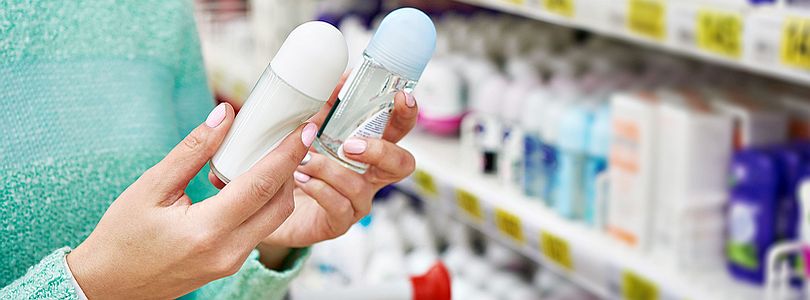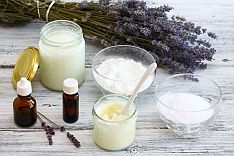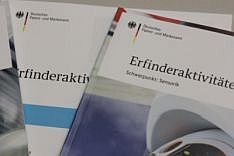Content
The great sweating

Refreshing inventions: Antiperspirants and deodorants
"Ulla" gave us 2019 heat records in this early summer and made us sweat a lot. With almost 40 degrees in the shade every movement is a sudorific affair, with which a little body odor can be connected. This body odour is mainly caused by bacteria breaking down the sweat on the human skin. According to dermatologists, the simple daily use of water and soap helps against this unpleasant smell. Antiperspirants and deodorants, which have become an integral part of the repertoire of our personal care products, are also well known. A possibly less known fact is that even though the odour problems associated with sweating have been known for thousands of years, the everyday product deodorant is still being developed further and patented.
Already in antiquity, people wanted to smell better
The history of deodorant goes back at least to antiquity. At that time, perfume oils were used to cover body odours. Alum (hydrated double sulfate salt of potassium and aluminium) and other aluminium compounds have also long been used to inhibit perspiration.
What are deodorants and antiperspirants?

The Latin word "deodorant" literally means "de-smeller". Early on, fragrant soaps were used for cleaning and to cover odours. Powder was also used to absorb odourous substances. In 1888, a deodorant based on a cream containing zinc oxide was developed in Philadelphia. Since then, patent applications have been filed on this subject. For example, patent specification ![]() CH 69562 A from 1914 combines absorbent and disinfectant agents in one powder. Today, deodorants are mainly offered as spray, lotion (roll-on) or stick.
CH 69562 A from 1914 combines absorbent and disinfectant agents in one powder. Today, deodorants are mainly offered as spray, lotion (roll-on) or stick.
In contrast, antiperspirants (sweat inhibitors) contain substances that reduce the activity of the sweat glands or prevent sweat from being released. If less sweat reaches the skin surface, the bacteria are deprived of food, which reduces the body odour. Originally, antiperspirants were developed to alleviate the symptoms of excessive sweating. For example, the patent specification ![]() US 1 371 822 A from 1921 describes a mixture of water, aluminium chloride and borax against unwanted or excessive sweating. However, these products often irritated the skin and could even damage people's clothing. Therefore, for example, patent specification
US 1 371 822 A from 1921 describes a mixture of water, aluminium chloride and borax against unwanted or excessive sweating. However, these products often irritated the skin and could even damage people's clothing. Therefore, for example, patent specification ![]() DE 811 014 B from 1949 (priority 1947) not only dealt with the production of an antiperspirant as a commercially marketable mass product that was easy to manufacture and stable in storage, but it also tested the effect on skin and textiles.
DE 811 014 B from 1949 (priority 1947) not only dealt with the production of an antiperspirant as a commercially marketable mass product that was easy to manufacture and stable in storage, but it also tested the effect on skin and textiles.
Where the journey goes – the trend towards aluminium-free deodorants

You may wonder what else can be newly invented relating to an everyday product such as a deodorant. Answers to these questions can be found, for example, in the patent applications for IPC class A61Q 15/00 "Anti-perspirants or body deodorants" which you can search in our patent database DEPATISnet.
Since aluminium compounds previously used in deodorants are suspected of causing serious diseases, the current applications indicate a trend towards aluminium-free antiperspirants. Compounds containing aluminium are replaced by other sweat inhibitors or the active principles of deodorants are used. In recent years, more and more plant and animal raw materials have been used in organic quality. For vegans, there are deodorants containing coconut oil and sodium bicarbonate ( ![]() DE 20 2016 100 816 U1). The utility model application
DE 20 2016 100 816 U1). The utility model application ![]() DE 20 2015 100 862 U1 proposes tannins as antiperspirant agents. Tannins are known to have an astringent effect, i.e. skin pores and vessels are being contracted. This can also influence sweat production and thus have an antiperspirant effect. Naturally occurring hydroxycarboxylic acids are another alternative to aluminium compounds – see for example
DE 20 2015 100 862 U1 proposes tannins as antiperspirant agents. Tannins are known to have an astringent effect, i.e. skin pores and vessels are being contracted. This can also influence sweat production and thus have an antiperspirant effect. Naturally occurring hydroxycarboxylic acids are another alternative to aluminium compounds – see for example ![]() DE 10 2014 222 270 A1, where tartaric acid, which occurs in grapes, is described as an active ingredient.
DE 10 2014 222 270 A1, where tartaric acid, which occurs in grapes, is described as an active ingredient.
Nevertheless, it is unlikely that aluminium can be completely dispensed with in the medium term. Current applications for antiperspirants containing aluminium therefore focus on improving the skin-friendliness of these products. Patent application ![]() DE 10 2015 213 345 A1, for example, proposes the use of phosphate compounds in combination with aluminium chlorohydrate. This is intended to reduce the amount of aluminium compounds used, improve the antiperspirant effect and increase skin compatibility.
DE 10 2015 213 345 A1, for example, proposes the use of phosphate compounds in combination with aluminium chlorohydrate. This is intended to reduce the amount of aluminium compounds used, improve the antiperspirant effect and increase skin compatibility. ![]() DE 10 2015 221 058 A1 proposes to add cross-linked silicones not only to make antiperspirants containing aluminium more effective, but also to reduce staining on clothing.
DE 10 2015 221 058 A1 proposes to add cross-linked silicones not only to make antiperspirants containing aluminium more effective, but also to reduce staining on clothing.
Do you want to know more about this topic?
If you would like to know more about inventions related to deodorant, take a look at our magazine Erfinderaktivitäten 2016/2017 (in German) starting on page 26, where you will also find references to all patent specifications, which you can access via DEPATISnet, the database of the DPMA.
Picture 1: iStock.com/sergeyryzhov, Picture 2: istock.com/svehlik, Picture 3: DPMA
Last updated: 19 May 2025

Not only protecting innovations
Social Media